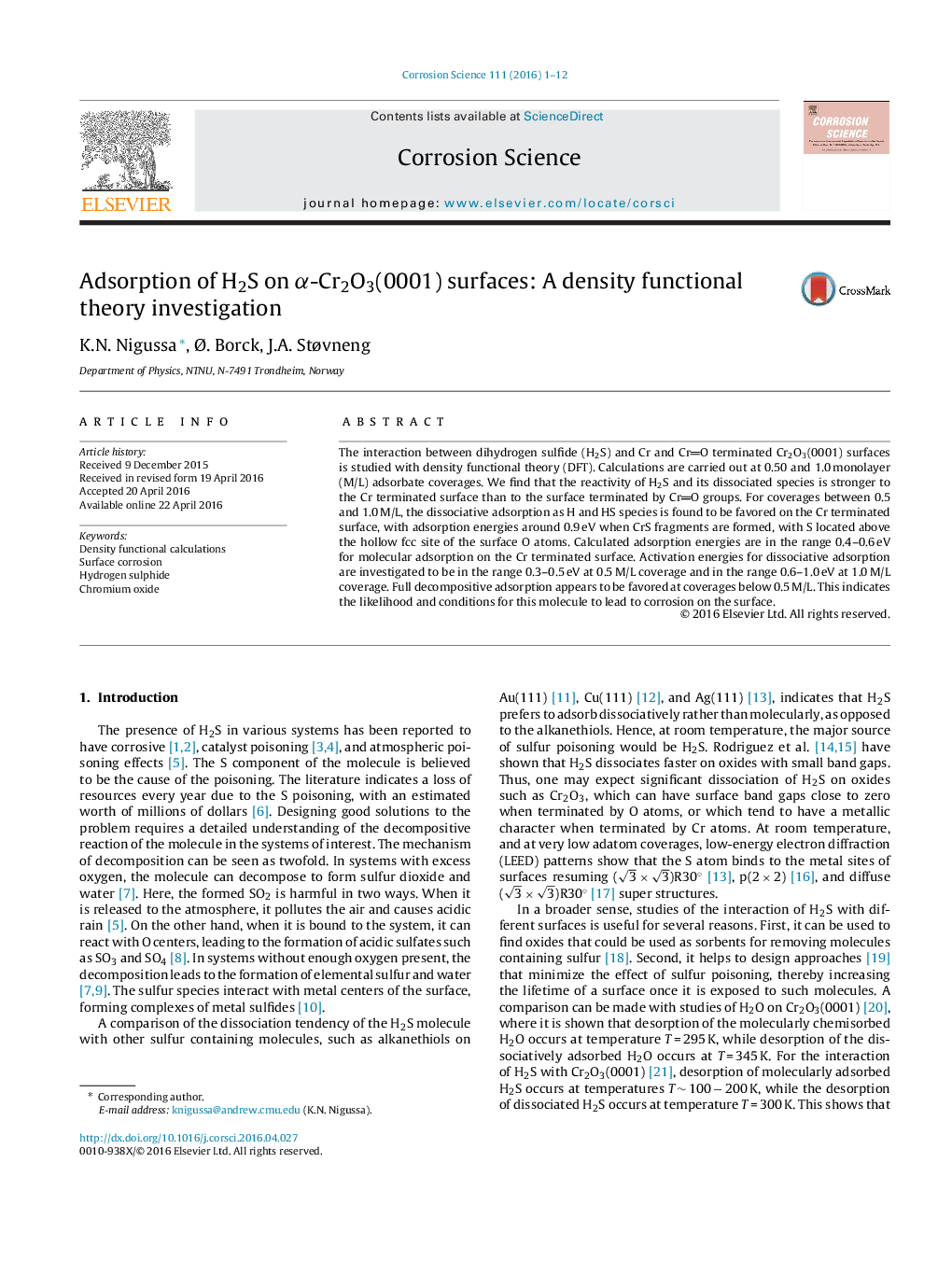| Article ID | Journal | Published Year | Pages | File Type |
|---|---|---|---|---|
| 1468274 | Corrosion Science | 2016 | 12 Pages |
•This work reveals how H2S interacts with Cr2O3 surface, and how its decomposition along the way lead to corrosion.•Moreover, the study also reveals how the molecule interacts with the surface.•The interaction of the molecule with the surface results to adsorptions as dissociated atomic species, which are known to lead to corrosion.
The interaction between dihydrogen sulfide (H2S) and Cr and CrO terminated Cr2O3(0001) surfaces is studied with density functional theory (DFT). Calculations are carried out at 0.50 and 1.0 monolayer (M/L) adsorbate coverages. We find that the reactivity of H2S and its dissociated species is stronger to the Cr terminated surface than to the surface terminated by CrO groups. For coverages between 0.5 and 1.0 M/L, the dissociative adsorption as H and HS species is found to be favored on the Cr terminated surface, with adsorption energies around 0.9 eV when CrS fragments are formed, with S located above the hollow fcc site of the surface O atoms. Calculated adsorption energies are in the range 0.4–0.6 eV for molecular adsorption on the Cr terminated surface. Activation energies for dissociative adsorption are investigated to be in the range 0.3–0.5 eV at 0.5 M/L coverage and in the range 0.6–1.0 eV at 1.0 M/L coverage. Full decompositive adsorption appears to be favored at coverages below 0.5 M/L. This indicates the likelihood and conditions for this molecule to lead to corrosion on the surface.
